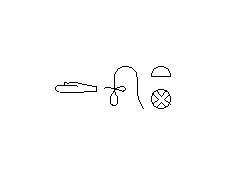
Los egipcios describían el Más Allá en términos muy concretos, impregnándolo no sólo de vida después de la muerte, sino también un mundo donde los dioses y, en particular el dios-sol, pasaban la noche después de la diaria 'muerte' del astro. Este mundo, llamado Duat, es mencionado ya en los Textos de las Pirámides del Imperio Antiguo. En algunos textos encontramos el cielo (nocturno) con los habitantes de la Duat viviendo como estrellas. El difunto está llamado a ascender al cielo a través de una escalera, en medio de una nube de polvo o de un remolino, como una langosta, o como un pájaro, etc. Sin embargo, los textos también hablan de un submundo localizado debajo de la superficie de la tierra. Los egipcios no consideraban ésto contradictorio, sino diferente, como caminos para descubrir distintos aspectos de la realidad. Desde el Imperio Medio, las descripciones del mundo de ultratumba son más concretas. Algunos sarcófagos incluso nos muestran mapas completos del mismo, dibujados en el fondo de las tablas. Una elaboración más tardía aparece en los textos funerarios del Imperio Nuevo, el Amduat y el Libro de las Puertas, hallados en el Valle de los Reyes. El Amduat en particular (en egipcio Imy(t)-Duat, 'el que está en el mundo de ultratumba') ilustra las regiones a través de las cuales el Sol viaja durante la noche, incluyendo a sus habitantes. En algunas ocasiones, se dan las medidas reales y, por ejemplo, se describen los ruidos inquietantes de este mundo. Gracias a las representaciones pictóricas con este mundo, las habitaciones oscuras en tumbas y templos, así como en criptas, pueden referirse al término Duat. Finalmente, la Duat se personifica como una diosa, la madre que da a luz a los difuntos resucitados.